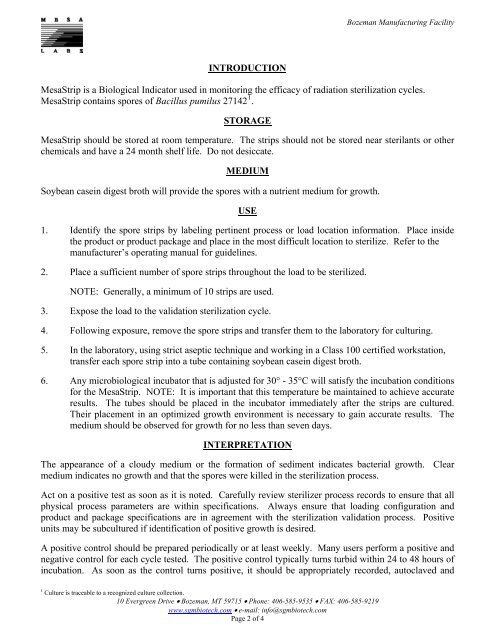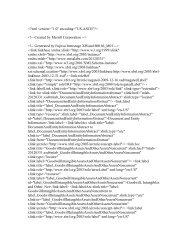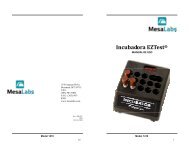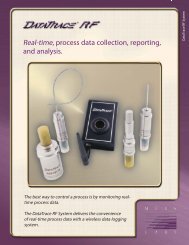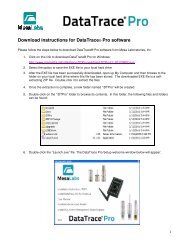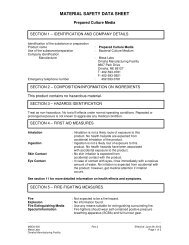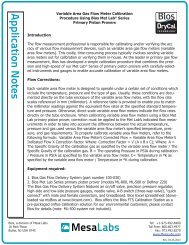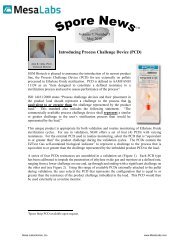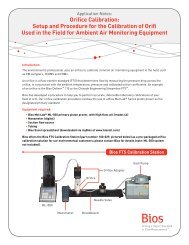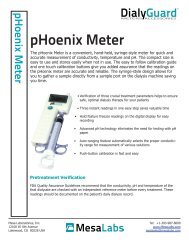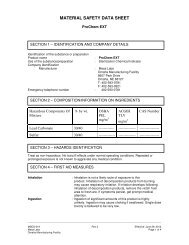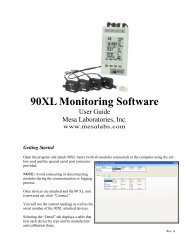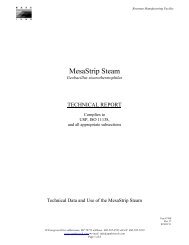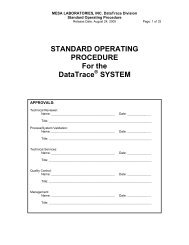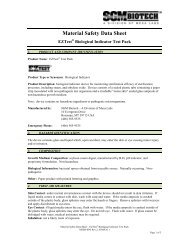MesaStrip Radiation - Mesa Labs
MesaStrip Radiation - Mesa Labs
MesaStrip Radiation - Mesa Labs
Create successful ePaper yourself
Turn your PDF publications into a flip-book with our unique Google optimized e-Paper software.
Bozeman Manufacturing Facility<br />
INTRODUCTION<br />
<strong><strong>Mesa</strong>Strip</strong> is a Biological Indicator used in monitoring the efficacy of radiation sterilization cycles.<br />
<strong><strong>Mesa</strong>Strip</strong> contains spores of Bacillus pumilus 27142 1 .<br />
STORAGE<br />
<strong><strong>Mesa</strong>Strip</strong> should be stored at room temperature. The strips should not be stored near sterilants or other<br />
chemicals and have a 24 month shelf life. Do not desiccate.<br />
MEDIUM<br />
Soybean casein digest broth will provide the spores with a nutrient medium for growth.<br />
USE<br />
1. Identify the spore strips by labeling pertinent process or load location information. Place inside<br />
the product or product package and place in the most difficult location to sterilize. Refer to the<br />
manufacturer’s operating manual for guidelines.<br />
2. Place a sufficient number of spore strips throughout the load to be sterilized.<br />
NOTE: Generally, a minimum of 10 strips are used.<br />
3. Expose the load to the validation sterilization cycle.<br />
4. Following exposure, remove the spore strips and transfer them to the laboratory for culturing.<br />
5. In the laboratory, using strict aseptic technique and working in a Class 100 certified workstation,<br />
transfer each spore strip into a tube containing soybean casein digest broth.<br />
6. Any microbiological incubator that is adjusted for 30° - 35°C will satisfy the incubation conditions<br />
for the <strong><strong>Mesa</strong>Strip</strong>. NOTE: It is important that this temperature be maintained to achieve accurate<br />
results. The tubes should be placed in the incubator immediately after the strips are cultured.<br />
Their placement in an optimized growth environment is necessary to gain accurate results. The<br />
medium should be observed for growth for no less than seven days.<br />
INTERPRETATION<br />
The appearance of a cloudy medium or the formation of sediment indicates bacterial growth. Clear<br />
medium indicates no growth and that the spores were killed in the sterilization process.<br />
Act on a positive test as soon as it is noted. Carefully review sterilizer process records to ensure that all<br />
physical process parameters are within specifications. Always ensure that loading configuration and<br />
product and package specifications are in agreement with the sterilization validation process. Positive<br />
units may be subcultured if identification of positive growth is desired.<br />
A positive control should be prepared periodically or at least weekly. Many users perform a positive and<br />
negative control for each cycle tested. The positive control typically turns turbid within 24 to 48 hours of<br />
incubation. As soon as the control turns positive, it should be appropriately recorded, autoclaved and<br />
1 Culture is traceable to a recognized culture collection.<br />
10 Evergreen Drive Bozeman, MT 59715 Phone: 406-585-9535 FAX: 406-585-9219<br />
www.sgmbiotech.com e-mail: info@sgmbiotech.com<br />
Page 2 of 4


